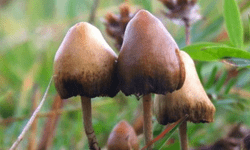
The past few years have witnessed astonishing growth in commercial interest in the use of psychedelics for treatment of a variety of unmet medical needs, particularly mental health disorders. With that growth has come an increase in patent filings as companies seek to protect their investments. IP protection for psychedelics and psychedelic-related compounds shares many challenges with patenting any life sciences technology, but with a few unique issues arising from their historical and sociocultural background.
Psych Exchange Podcast
Readers wishing to take a deeper dive into patenting psychedelics than what follows below might want to listen to an interview of our law partner, Gretchen L. Temeles, Ph.D., with Psych Exchange podcast. This podcast series is the brainchild of two talented University of Pennsylvania graduate students, Adrienne Jo and Sophie Rogers. For those short on time, the first 15 minutes or so are about Gretchen’s background; discussion of patenting issues and strategies begins about 15 minutes into the podcast.
Psychedelics: An Introduction
By way of introduction, psychedelics are a loosely defined class of compounds based on their pharmacology and effects relating to expansion or heightening of consciousness. Classic psychedelics include psilocybin, lysergic acid diethylamide (LSD), ayahuasca, ibogaine, and MDMA. Some of these compounds were used in traditional religious practice over hundreds of years, whereas others were developed in the laboratory. In 1970, many were classified as Schedule 1 under the Controlled Substances Act. Schedule I substances are considered to have no currently accepted medical use and a high potential for abuse, and their possession and sale is illegal under U.S. federal law
This classification essentially brought U.S. research into psychedelics to a standstill. Research into agents for treating mental health is demanding at best, and over the past 30 years, no new non-psychedelic mental health pharmaceuticals have been introduced.
Psychedelic Renaissance
The so-called “Psychedelic Renaissance” over the past 15 years has seen a dramatic increase in the number of companies developing psychedelic therapeutics for a range of indications, including central nervous system conditions and others, e.g., depression, post-traumatic stress disorder, obsessive-compulsive disorder, bipolar disorder, anxiety, cluster headaches, and eating disorders. The FDA has also taken a strong interest in psychedelics, providing for expedited development and review for several psychedelic therapies.
The Schedule 1 status of psychedelics is irrelevant to patentability. Claims must be new, useful and nonobvious and the application must teach one of ordinary skill in the art how to make and use the invention. But, because the classic psychedelics are well known in the art, securing strong claims to psychedelics is challenging.
Companies have taken approaches that are standard in the pharmaceutical industry, such as development of new formulations, specific isolated forms of compounds, drug combinations, dose regimens, and methods of synthesis. However, the dampening effect of Schedule 1 status on basic research, combined with traditional and underground use can make identifying relevant prior art references a challenge.
Some companies have also developed novel compounds derived from known molecular scaffolds. There is a strong interest in developing non-psychoactive “psychedelics” to retain the beneficial therapeutic effects of known compounds but without the psychoactive effects. Classic psychedelics also are known to have anti-inflammatory effects, so some companies are developing novel anti-inflammatory compounds. Regardless of the approach, anyone interested in securing patent protection would do well to invest in careful patent landscape searching beforehand. Enjoy the podcast.
— Gretchen L. Temeles, Ph.D., J.D.

